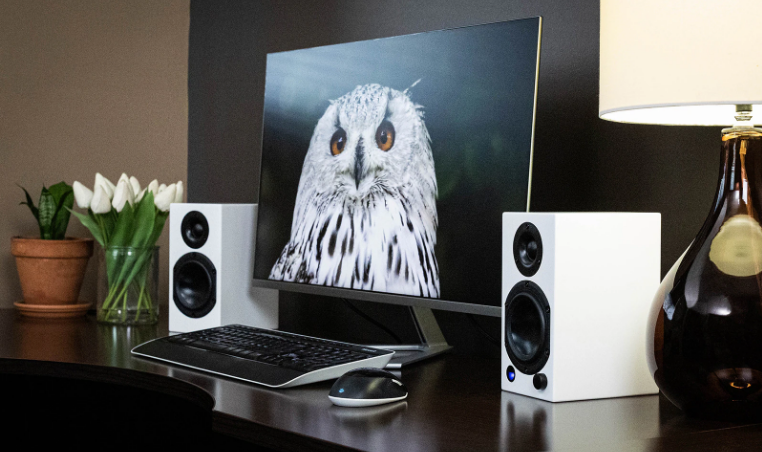
Dayton Audio M-Series Speaker
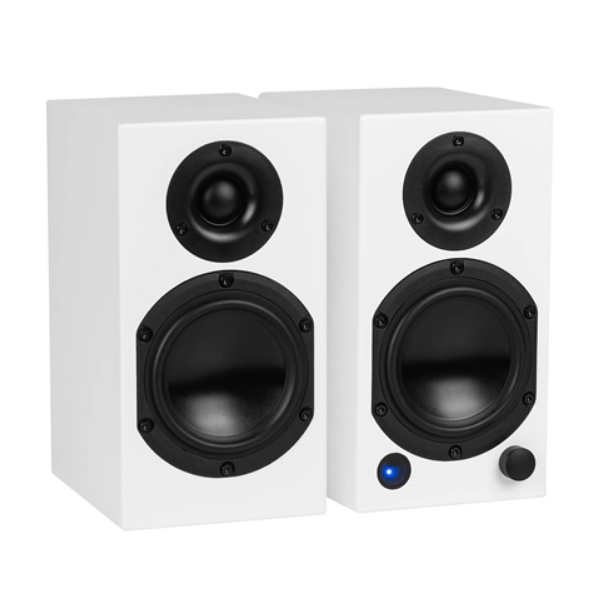
FCC Warnings
Any Changes or modifications not expressly approved by the party responsible for compliance could void the user’s authority to operate the equipment.
Note: This equipment has been tested and found to comply with the limits for a Class B digital device, pursuant to part 15 of the FCC Rules. These limits are designed to provide reasonable protection against harmful interference in a residential installation. This equipment generates and usescan radiate radio frequency energy and, if not installed and used according to the instructions, may cause harmful interference to radio communications. However, there is no guarantee that interference will not occur in a particular installation. If this equipment does cause harmful interference to radio or television reception, which can be determined by turning the equipment off and on, the user is encouraged to try to correct the interference by one or more of the following measures:
- Reorient or relocate the receiving antenna.
- Increase the separation between the equipment and receiver.
- Connect the equipment into an outlet on a circuit different from that to which the receiver is connected.
- Consult the dealer or an experienced radio/TV technician for help.
This device complies with part 15 of the FCC Rules. Operation is subject to the following two conditions:
- This device may not cause harmful interference, and
- this device must accept any interference received, including interference that may cause undesired operation.
This equipment complies with FCC radiation exposure limits set forth for an uncontrolled environment.
This equipment should be installed and operated with a minimum distance 2of 0cm between the radiator & your body.
Features
Since its establishment, Dayton Audio has been synonymous with premier loudspeaker components and ready-to-build designs. During our research and development process to develop new and interesting loudspeaker concepts, we created the M Series of powered personal monitors. This speaker system embodies our commitment to innovation, exclusively incorporating Dayton Audio’s in-house components, ensuring an audio experience that is both authentic and groundbreaking.
Central to this system is the Dayton Audio Signature Series Aluminum Cone Woofer, a marvel of acoustic engineering. Featuring a damped aluminum cone, vented Polyamide formers, and aluminum shorting sleeves, the Signature Series woofer digs down with authority while accurately reproducing midrange detail with a high level of intelligibility. The high sensitivity of the Signature Series woofer takes advantage of every watt generated by the built-in power amplifier, leading to explosive SPL levels.
Handling the duty of the top-end is the Dayton Audio (whatever series this tweeter will go into) Tweeter. The fabric dome composition of the tweeter allows for a smooth response and wide dispersion, enabling a much larger and smoother listening window. These low-fatigue tweeters are the perfect complement for the Signature Series Woofers. aAndDSP and Active Crossovers ensure a smooth transition from the woofer to the tweeter through the 2.5kHz crossover frequency for a truly content, no frills listening experience.
Aside from the aural aspect of design, Dayton Audio has designed the M Series with user experience in mind. RCA inputs, wireless Bluetooth, and a USB-C DAC provide you with all the high-fidelity inputs you need. A highly accessible volume knob controls input and volume and can be switched to the left or right speaker depending on your handedness, or control from a distance with the included IR remote control. A preamplified sub out allows you to add a subwoofer to your system for extra low-end if required.
What’s In The Box
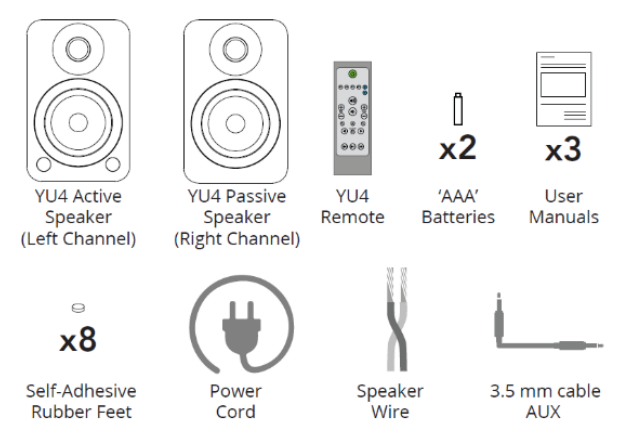
- Powered Speaker
- Passive Speaker
- This Manual
- Rubber Feet
- Power Cable
- USB-C Cable
- 3.5mm to RCA cable ~
- IR Remote
- I want to have these all drawn instead of listed
Unpacking
Please unpack the speakers and carefully examine them for any potential damage that may have occurred during shipping. If damage is discovered, it is important to promptly inform the shipping company.
While Dayton Audio is available and willing to assist as necessary, only the recipient can initiate a claim for any shipping-related damage. If the product shows visible signs of damage upon arrival, be sure to retain the shipping carton for the shipper’s inspection.
It is strongly advised to keep all packing materials, as they may be useful in the future event that the speakers need to be transported or stored. Never attempt to ship the speakers without the original factory carton and the accompanying packing materials.
Panels and Controls
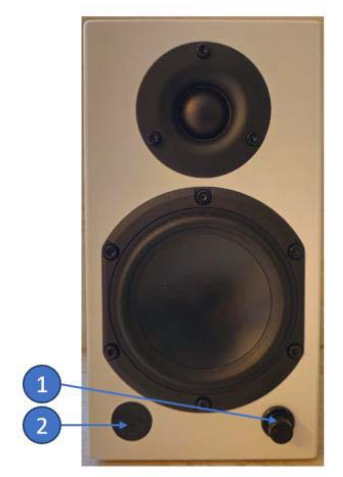
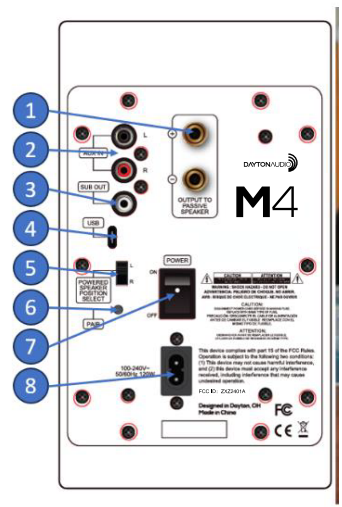
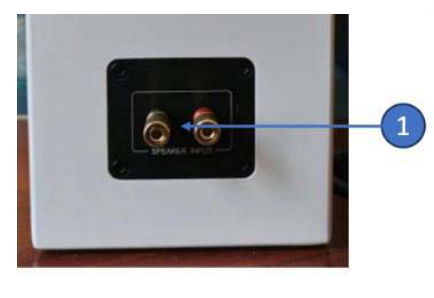
- Input Status Indicator
- Green-Aux
- Amber-USB
- Blue – Bluetooth
- Red – Standby
- Volume/ Input/ Standby Control
- Turn this to control the output volume.
- Press the knob to turn the speaker on and switch between inputs
- Press and hold the speaker in standby
- Speaker Output Terminals (pg 6)
- Line Level Aux Inputs (pg 7)
- Line Level Subwoofer Output (pg 6)
- Use DAC connection (pg 7}
- Powered Speaker Position Select Switch (pg 6)
- Bluetooth Pairing Button
Pressing this will disconnect from any connected Bluetooth source and initiate pairing mode.. - Power Switch (pg 5}
- AC Power Input (pg 5}
- Passive Speaker Input (pg 6)
Connecting To Power
M Series has a built-in universal power supply and is capable of accepting power in any country. Connect the included power cable to the AC input on the rear of the powered speaker and to mains power.
Turn the main power switch on the rear of the speaker to “ON” to power on the speakers.
Note: Do not turn the speaker on before connecting the passive speaker. The M Series will enter a protection mode if it is turned on without a connected speaker. If this happens, simply turn the speaker off and back on again.
Standby
In order to save power, M Series speakers can be placed in standby. This can be done manually or will happen automatically.
Pressing and holding the control knob on the front of the speaker or the power button on the remote control will place the speaker in standby. When in standby, the front indicator LED will turn red. The speaker will also automatically enter standby after 30 minutes of silence.
To exit standby, press and hold the control knob on the front of the speaker of the power button on the remote. The speaker will return to the last used input and retain the bass boost setting if enabled.
Hooking Up
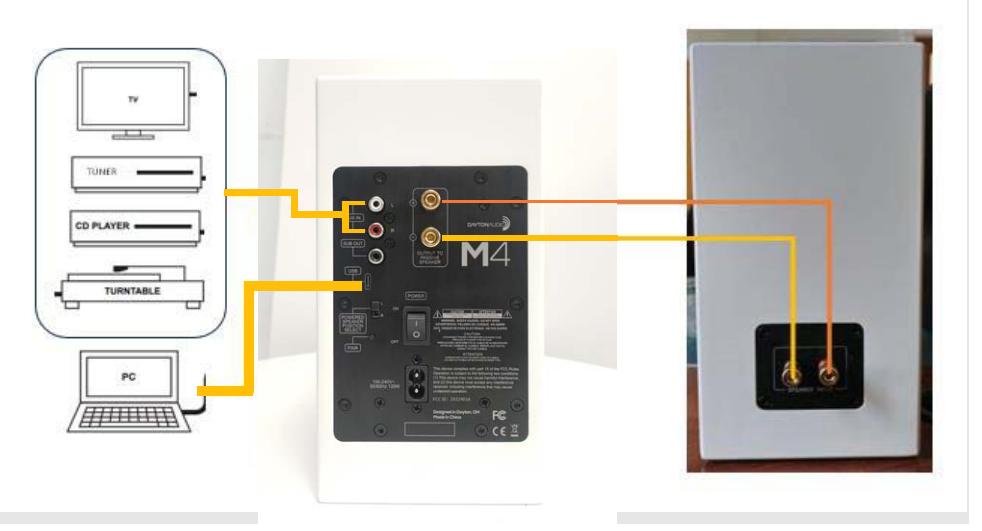
Connecting Speakers
Using the supplied speaker cable, connect the output of the powered speaker to the input of the passive speaker. Connect the red connector to the positive (+) on both speakers and the black connector to the negative (-) on both speakers. If this cable is installed incorrectly, the speakers will be out of phase and lack bass and proper imaging.
M Series speakers will enter a protection mode if the passive speaker is not connected at startup. Be sure to connect the speakers before powering them on. For custom cabling solutions, be sure to use high-quality two-conductor speaker wire. Using poor-quality cable can result in diminished sound quality and can potentially cause damage to the speaker or amplifier.
Connecting a Subwoofer
An additional subwoofer can be added using the SW OUT connection on the rear of the powered speaker. This will send a mono-summed low-passed signal that is controllable by the front volume knob. Use a single RCA cable to connect to the line level input on a powered subwoofer or to any external subwoofer amplifier to power passive subwoofers. Set the subwoofer’s or amplifier’s low-pass filter to a frequency appropriate for your subwoofer, which is typically around 100 Hz.
Connecting Sources
M Series speakers can receive signals directly from a wide variety of sources. Using high-quality cables will ensure the best possible transmission from your connected devices. USB-C and RCA cables have been included with the M Series for your convenience.
Connecting to use Devices
The USB input of your M-Series speakers can accept a large variety of audio formats via USB (up to 192 kHz 32-bit). The supplied USB-C cable can connect directly to most computers, phones, and tablets. Select the USB input by pressing the front control knob until the indicator light turns amber, or with the included remote control. The Audio format can usually be changed in the sound control settings on the connected host device.
Connecting a Turntable
M Series speakers do not have a built-in phone preamp. To connect a turntable, an external phono preamplifier will be required. Many modern turntables have a built-in preamplifier that can be used. Consult the user manual of the turntable for hook-up instructions. Otherwise, a small phone preamp will need to be connected between the turntable and speakers.
Bluetooth as a Source
Bluetooth is built into the M Series speakers for convenient wireless streaming.
- Select the Bluetooth input by pressing the front control knob until the indicator light turns blue, or with the included remote control.l
- Using a smartphone, tablet, computer, or other device capable of transmitting Bluetooth audio, go to the device’s settings and scan for available Bluetooth devices.
- Look for and select ·M411 or “M6” in the device list and begin pairing. The Bluetooth source light on the front of the speaker will flash until a device is paired.
- Once the Bluetooth source light stops flashing and your device indicates that you are connected, you can begin streaming your favorite music from up to 30 feet away.
Placement
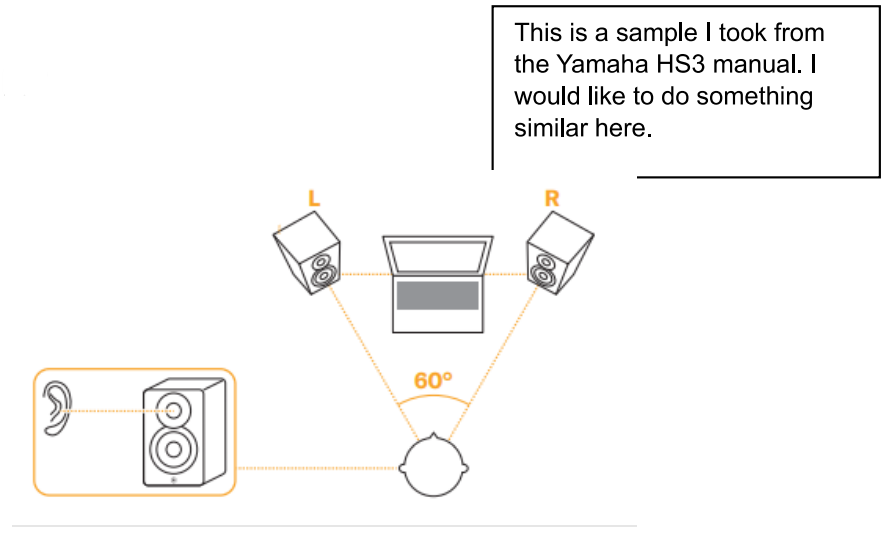
Proper placement of your stereo speakers is crucial to achieving optimal audio performance. The M Series has been designed to sound best when placed close to the listener, such as on a desk. Follow the guidelines below to ensure the best sound experience.
Place the speakers at an equal distance from each other and ensure they are directly facing the listening area. To create a balanced soundstage, aim for an equidistant placement of both speakers from the primary listening position to maintain balanced audio dispersion.
Ideally, the tweeters (high-frequency drivers) should be positioned at ear level when seated. Use speaker stands or adjustable mounts if necessary. Slight angling of the speakers in and up towards the listener can enhance stereo imaging. Experiment with angles between 5-30 degrees to find the best sound.
Note: Keep in mind that every room has unique acoustic properties, and small adjustments can make a significant difference in sound quality. Some experimentation may be necessary to find the optimal placement for your specific environment.
Left/Right Speaker Position Select
To accommodate any desired position and assist with cable routing, the powered monitor can be placed either on the left or right side of the listener. This can be set with the Powered Speaker Position Select Switch in the rear of the speaker.
Bass Boost
Enabling the bass boost feature on desktop speakers amplifies the low-frequency range, adding depth and vibrancy to the audio output. To enable bass boost, press the bass boost button on the included remote. The indicator LED on the front of the speaker will flash twice to indicate bass boost is active. Pressingg bass boost again will return the M Series speaker to the normal EQ setting. The front indicator LED will flash once to indicate that bass boost is now inactive. If activated, bass boost will remain enabled after the speaker returns from standby.
Installing Rubber Feet (optional)
To ensure M Series speakers stay securely in position and to safeguard furniture from potential damage, adhesive-backed rubber feet are included and can be applied to the underside of each loudspeaker. The use of these rubber feet is optional and will not be required in all installations.
Using Your Speakers
Speakers often exhibit a noticeable improvement after a break-in period of around 30 to 40 hours of playtime. During this initial phase, the soft parts of the drivers (surround and spider) will relax and become more compliant, resulting in enhanced detail for improved audio quality۔
To break in inpeakers effectively, play a diverse selection of music at moderate volume levels. This allows the speaker’s transducers to settle and relax, optimizing their performance. It is worth noting that even after this initial break-in period, further improvements in sound quality can continue to develop over time, ensuring an even more satisfying listening experience.
Care and Maintenance
The finish on the cabinets can be maintained with regular dusting. For extreme buildup of dust or debris, a slightly dampened microfiber cloth can be used. Exercise caution to not gett moisture on the driver components.
If you do wish to use a cleaning solution, please do so by applying a small amount to an inconspicuous part of the cabinet, such as the bottom, before applying it to the entire cabinet. Do this to ensure that the solution will not cause harm to the finish of the M Series.
Troubleshooting
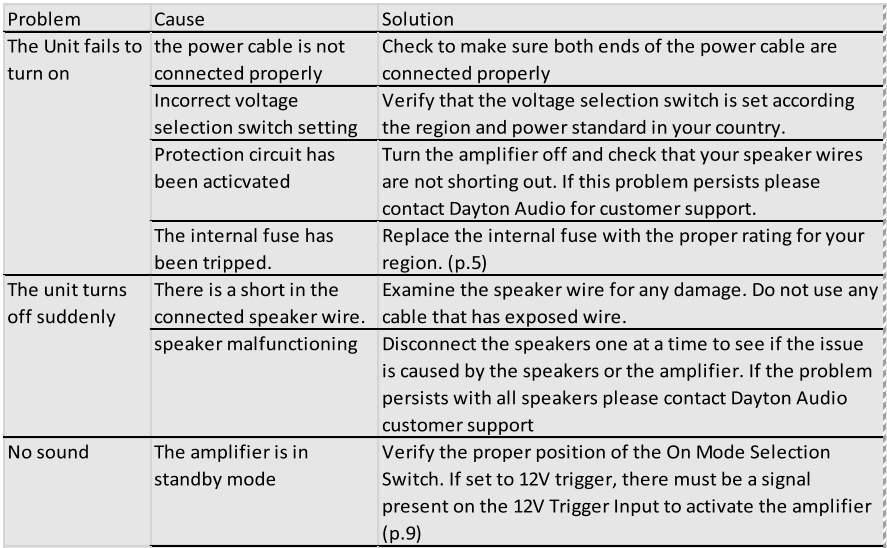
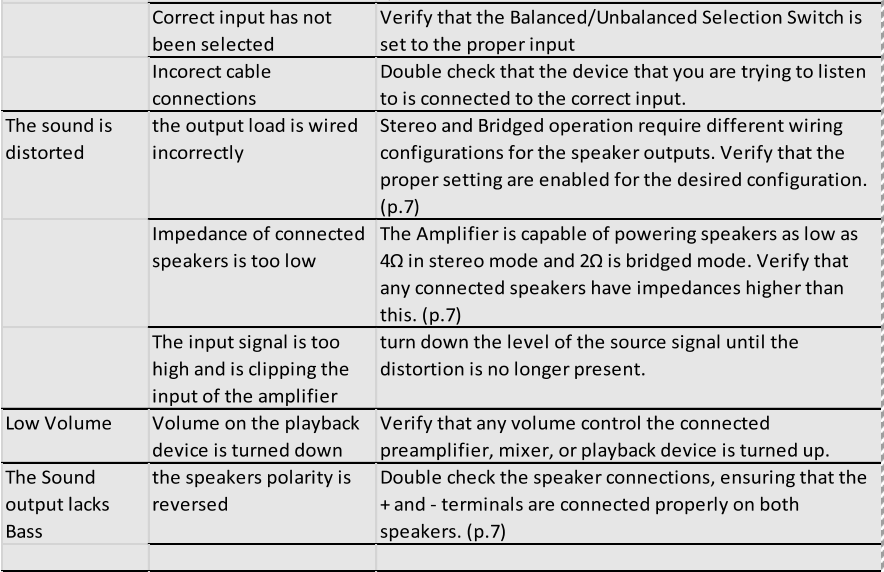
Specifications
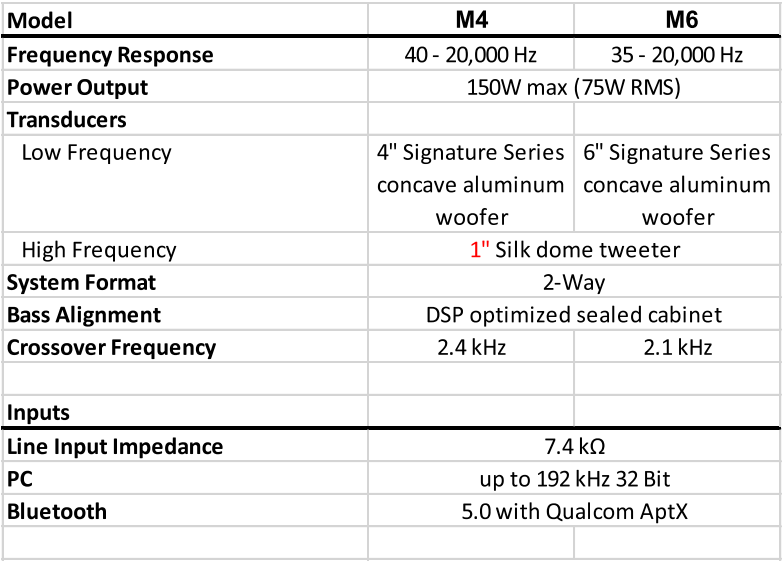
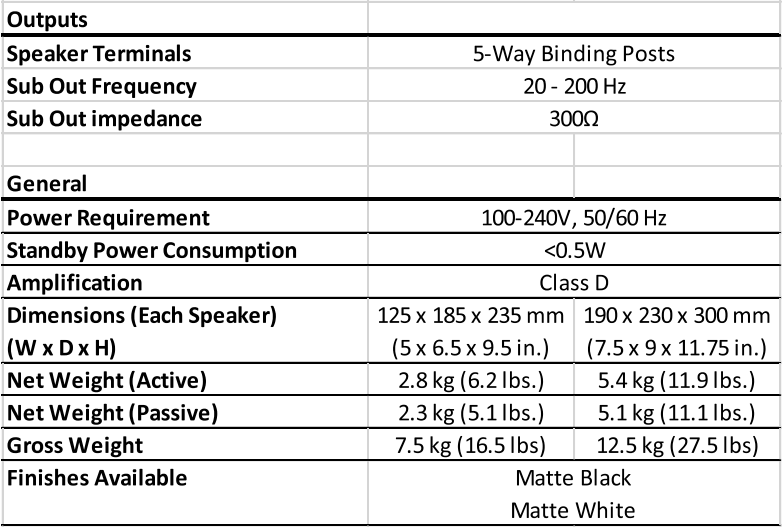
For more manuals by Dayton Audio, visit ManualsLibraryy
Dayton Audio M-Series Speaker- FAQs
How do I manually connect speakers?
Connect the positive (+) and negative (–) terminals of the speaker to the matching terminals on your amplifier or receiver using proper speaker wire.
What should I do if the speaker is connected but no sound?
Check cables, amplifier settings, and volume. Ensure your device is set as the default audio output and disable audio enhancements if needed.
How do I pair a Bluetooth device with the speaker?
Turn on pairing mode on the speaker, then go to your phone or device’s Bluetooth settings and select the speaker from available devices.
Can I connect a speaker directly to my phone?
Yes, if it’s a Bluetooth speaker. For wired speakers, you’ll need an external amplifier since phones cannot power passive speakers directly.
What is pairing mode?
Pairing mode allows the speaker to be discoverable by other Bluetooth devices so you can establish a connection.
Can a speaker work without power?
Yes, passive speakers work without direct power but require an amplifier to function. Active (powered) speakers need their own power source.
How do I know if my speaker is active or passive?
Active speakers have a built-in amplifier and need a power cord. Passive speakers only connect with speaker wire and rely on an external amplifier.
What is the best way to position speakers for good sound?
Place speakers 2–3 feet from walls, angled slightly toward the listening position, with equal distance between left and right speakers.
How can I make my speakers sound louder or better?
Use quality cables, check amplifier power, place speakers properly, and consider adding a subwoofer for richer sound.

